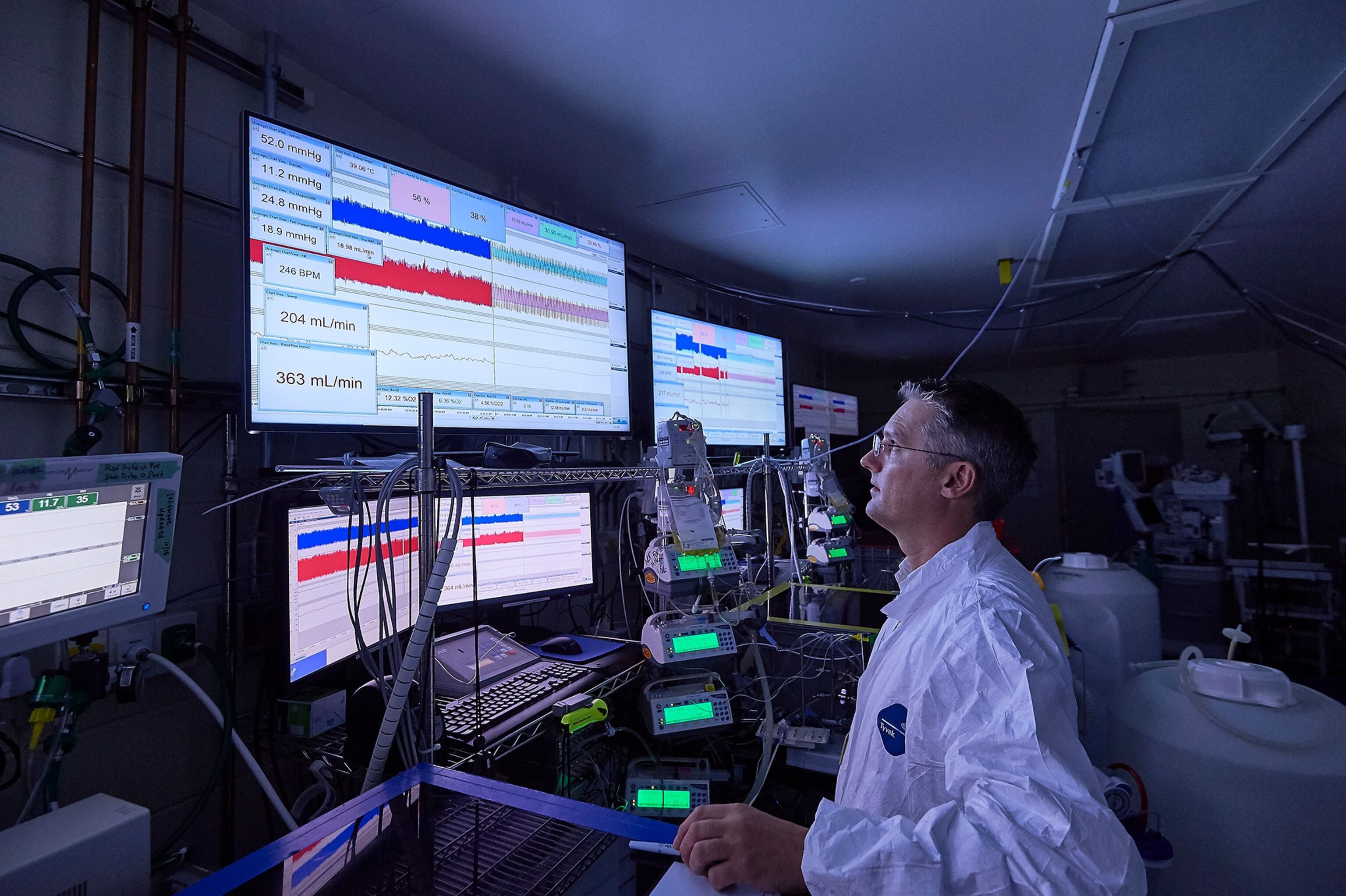
Artificial Womb Could Offer New Hope for Premature Babies
A device tested on lambs could one day help extremely tiny babies grow up healthy.
Marking what could be a vital development for treating premature babies, researchers announced today that eight fetal lambs survived and grew inside an artificial womb for four weeks, the longest an animal has done so.
The team reports that the lambs’ lungs and other organs developed as though they were in their mother’s womb, an important improvement over the incubators and ventilators now used to keep preemies alive. A few of the lambs have since grown to adulthood, and one is now more than a year old. (Also read about the first year of a baby’s brain development in National Geographic magazine.)
“They appear to have normal development in all respects,” says study leader Alan Flake at Children’s Hospital of Philadelphia. “We don’t have an intelligence test for lambs,” he adds, “but we think they’re pretty smart lambs.”
Researchers hope to one day use similar technology in humans to help the tiniest premature babies grow up healthy.
The average gestation time for humans is 40 weeks. But about 30,000 babies are born younger than 26 weeks old in the United States each year. Those pushing the limits of viability—22 to 23 weeks—typically weigh only about a pound and have less than a 50 percent chance of survival. Of those who survive, many have severe disabilities, including lung disease and cerebral palsy.
If the new device succeeds, the parents of a premature baby might someday peer into an incubator that looks a bit like an aquarium. In the device, a premature infant is enclosed in a large, clear plastic bag filled with artificial amniotic fluid.
The baby breathes the fluid, as it would in the uterus, and its umbilical cord is connected to a machine that adds oxygen and removes carbon dioxide from the blood.
The researchers say that the artificial womb isn’t meant to replace the real thing, and can’t rescue fetuses younger than about 22 or 23 weeks—they’re simply too tiny and undeveloped.
“It’s certainly not our goal to extend the limits of viability,” Flake said during a Monday press conference announcing the results. “Our goal is to improve survival for extremely premature infants.”
Womb in a Bag
The Philadelphia team has been testing and tweaking their device for three years, as they report today in the journal Nature Communications. In the latest version, they tested five lambs that were surgically removed from their mothers after 105 to 108 days of gestation, when they were similar in development to a 23-week-old human fetus. The team also tested three lambs that were 115 to 120 days old.
Even the youngest lambs developed normally inside the artificial wombs and were able to move, open their eyes, and even grew wool while in the bags. Once their lungs and other systems were mature enough, the lambs were “delivered” from their bags and put on ventilators, where they showed normal lung function.

“These are some very promising and impressive results,” says George Mychaliska, a pediatric and fetal surgeon at the University of Michigan’s Extracorporeal Circulation Research Laboratory. Working with Robert Bartlett, the inventor of the first artificial womb-like device, Mychaliska and his team have been developing their own system for a decade.
Unlike the Pennsylvania researchers’ device, which relies on the fetus’ heart to pump its blood, the Michigan system uses a mechanical pump. In both systems, infants breathe a simulated amniotic fluid, but in Michigan they’re not immersed in a bag of fluid.
Each team points out the benefits of its device—one avoids pumps that can strain a tiny heart, the other makes it easier to access the infant if something goes wrong—but neither has yet been tested on humans.
Not 'The Matrix'
The goal of any artificial womb system, Mychaliska says, is not to grow babies entirely outside the mother. “That’s a Matrix thing,” he says, referring to the 1999 film in which humans are grown in pods.
“The whole point of the artificial placenta is to re-create the uterine environment for a period of time and allow the organs to develop to a point where the infant can tolerate postnatal life,” he says.

For human infants, that critical point comes at about 28 weeks old, when the lungs have developed enough to allow the infant to breathe air. In most cases, an infant in an artificial womb would be removed at that stage, to reduce the risks of infection and blood clots that come with the device.
Both Mychaliska and Flake are confident that such artificial wombs will soon be a reality, whichever of their designs prevails.
But before being tested on human infants, any new device will have to make it through more animal trials to demonstrate its safety for testing in humans. It would also have to be adapted to human babies, which are less than half the size of the lambs in the study. Both teams say that their devices could be ready for such tests in three to five years.





